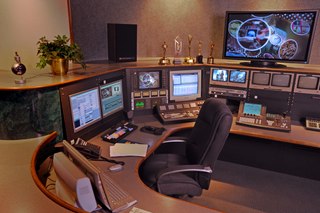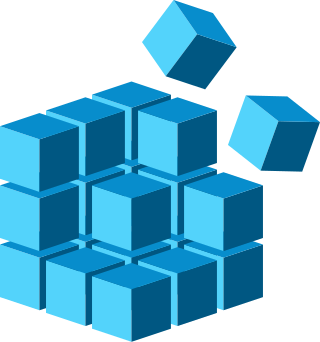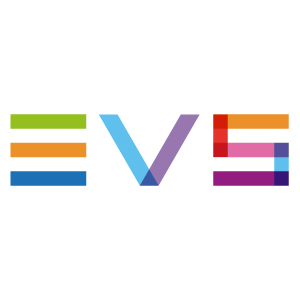Lightworks is a freemium non-linear editing system (NLE) for editing and mastering digital video. It was an early developer of computer-based non-linear editing systems, and has been in development since 1989. Lightworks won a 2017 EMMY Award for being one of the first to create digital nonlinear editing software. The development of an open-source version was announced on April 11, 2010. However, no source code of the program has been released. In July 2020, a Lightworks product manager confirmed that they "Still hope to announce something in the future" about Lightworks' open source development.

Video editing software or a video editor is software used for performing the post-production video editing of digital video sequences on a non-linear editing system (NLE). It has replaced traditional flatbed celluloid film editing tools and analog video tape editing machines.
A web portal is a specially designed website that brings information from diverse sources, like emails, online forums and search engines, together in a uniform way. Usually, each information source gets its dedicated area on the page for displaying information ; often, the user can configure which ones to display. Variants of portals include mashups and intranet dashboards for executives and managers. The extent to which content is displayed in a "uniform way" may depend on the intended user and the intended purpose, as well as the diversity of the content. Very often design emphasis is on a certain "metaphor" for configuring and customizing the presentation of the content and the chosen implementation framework or code libraries. In addition, the role of the user in an organization may determine which content can be added to the portal or deleted from the portal configuration.

Non-linear editing is a form of offline editing for audio, video, and image editing. In offline editing, the original content is not modified in the course of editing. In non-linear editing, edits are specified and modified by specialized software. A pointer-based playlist, effectively an edit decision list (EDL), for video and audio, or a directed acyclic graph for still images, is used to keep track of edits. Each time the edited audio, video, or image is rendered, played back, or accessed, it is reconstructed from the original source and the specified editing steps. Although this process is more computationally intensive than directly modifying the original content, changing the edits themselves can be almost instantaneous, and it prevents further generation loss as the audio, video, or image is edited.
Material Exchange Format (MXF) is a container format for professional digital video and audio media defined by a set of SMPTE standards. A typical example of its use is for delivering advertisements to TV stations and tapeless archiving of broadcast TV programs. It is also used as part of the Digital Cinema Package for delivering movies to commercial theaters.

Post-production is part of the process of filmmaking, video production, audio production, and photography. Post-production includes all stages of production occurring after principal photography or recording individual program segments.
TrueSpace was a commercial 3D computer graphics and animation software developed by Caligari Corporation, bought-out by Microsoft. As of May 2009, it was officially discontinued, but with some 'unofficial support' up to February 2010.

The Windows Registry is a hierarchical database that stores low-level settings for the Microsoft Windows operating system and for applications that opt to use the registry. The kernel, device drivers, services, Security Accounts Manager, and user interfaces can all use the registry. The registry also allows access to counters for profiling system performance.
A collaborative real-time editor is a type of collaborative software or web application which enables real-time collaborative editing, simultaneous editing, or live editing of the same digital document, computer file or cloud-stored data – such as an online spreadsheet, word processing document, database or presentation – at the same time by different users on different computers or mobile devices, with automatic and nearly instantaneous merging of their edits.
Quantel was a company based in the United Kingdom and founded in 1973 that designed and manufactured digital production equipment for the broadcast television, video production and motion picture industries. It was headquartered in Newbury, Berkshire. The name Quantel came from Quantised Television, in reference to the process of converting a television picture into a digital signal.

Adobe Photoshop Lightroom, usually called Lightroom, is an image organization and processing application developed by Adobe. It is licensed as a standalone subscription or as part of Creative Cloud. It is supported on Windows, macOS, iOS, Android, and tvOS. Its primary uses include importing, saving, viewing, organizing, tagging, editing, and sharing large numbers of digital images. Lightroom's editing functions include white balance, presence, tone, tone curve, HSL, color grading, detail, lens corrections, and calibration manipulation, as well as transformation, spot removal, red eye correction, graduated filters, radial filters, and adjustment brushing. The name Lightroom is a play on the darkrooms used for processing film.
Blackbird is an integrated internet video platform, video editing software, covering non-linear editing and publishing for broadcast, web and mobile.

Desktop virtualization is a software technology that separates the desktop environment and associated application software from the physical client device that is used to access it.

SharePoint is a collection of enterprise content management and knowledge management tools developed by Microsoft. Launched in 2001, it was initially bundled with Windows Server as Windows SharePoint Server, then renamed to Microsoft Office SharePoint Server, and then finally renamed to SharePoint. It is provided as part of Microsoft 365, but can also be configured to run as On-premises software.
StorNext File System (SNFS), colloquially referred to as StorNext is a shared disk file system made by Quantum Corporation. StorNext enables multiple Windows, Linux and Apple workstations to access shared block storage over a Fibre Channel network. With the StorNext file system installed, these computers can read and write to the same storage volume at the same time enabling what is known as a "file-locking SAN." StorNext is used in environments where large files must be shared, and accessed simultaneously by users without network delays, or where a file must be available for access by multiple readers starting at different times. Common use cases include multiple video editor environments in feature film, television and general video post production.
The term Harding test is generically understood to mean an automatic test for photosensitive epilepsy (PSE), triggered by provocative image sequences in television content. This is properly known as a PSE test since the publication of the Digital Production Partnership (DPP) technical requirements and the DPP PSE Devices document updated in November 2018.

EVS Broadcast Equipment SA is a Belgian company that develops hardware and software products and services for live video production applications. The company counts over 600 employees worldwide.

Doremi Laboratories, Inc., often shortened to Doremi Labs, was a developer and manufacturer of digital servers and format converters for the digital cinema, broadcast, post-production and professional A/V markets. It was established in 1985 in Burbank, California, United States, and was absorbed into Dolby Laboratories in a 2014 acquisition.








